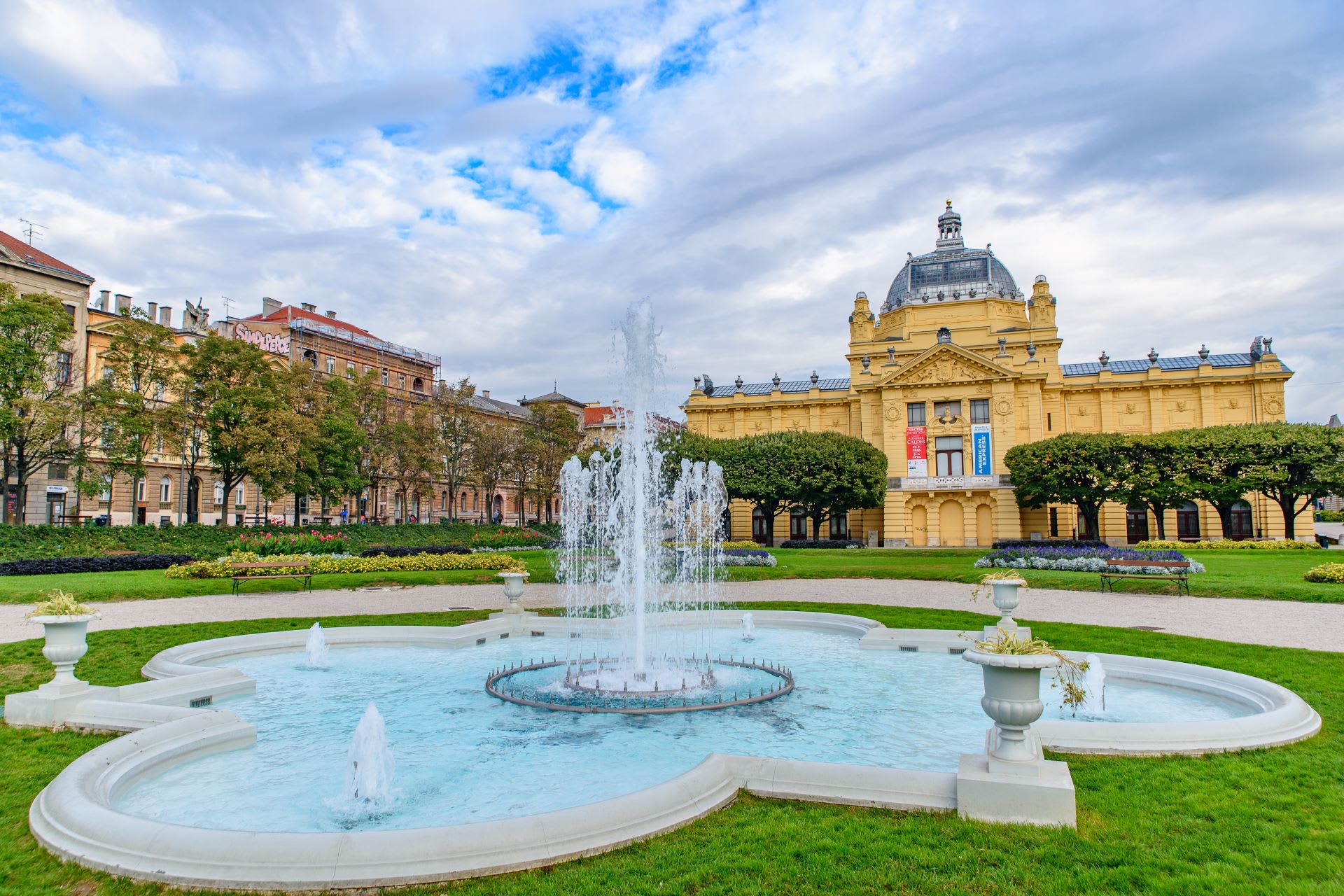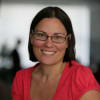The city of Zagreb, which has a population of less than one million, is the centre of cultural life in Croatia and you will find that the museums in Zagreb are regular treasure troves.
While Croatia is best known for its coastline, the landlocked capital is a recent discovery for most visitors. It’s time to put Zagreb in the spotlight. Sights such as Ilica Street, King Tomislav Square or the Museum of Broken Relationships cater to everyone.
 Photo: Davor Djopar
Photo: Davor DjoparChurch of St. Mark is one of the oldest monuments in Zagreb. It was built in the 13th century and radically reconstructed in the second half of the 14th century
Zagreb grew out of two fortified towns on adjacent hills in the Middle Ages: Kaptol, which was the centre of the bishopric, and Gradec, also known as Upper Town, which was granted the status of a free royal town in the 13th century. Zagreb began expanding rapidly in the 19th century, which led to the careful planning of the Lower Town, the centre of city life today.
Social life and architecture
At the centre of the Upper Town stands the Gothic-style Church of St. Mark, while the eponymous square is the location of the seat of the Croatian Parliament and Government. The nearby Lotrščak Tower is a remnant of the medieval city walls, from which a cannon is fired every day at noon sharp. You should visit the Stone Gate, which used to be the main entrance into Gradec.
 Photo: Paul Prescott
Photo: Paul PrescottDolac farmers market is often called "the belly of Zagreb"
You can reach the Upper Town by the Zagreb Funicular, which has been operational for the last 130 years. If you pay attention to the street lighting, you will notice that gas lamps are still being used, and a ‘lamplighter’ goes around lighting them up each evening.
The adjacent Kaptol hill is dominated by the Cathedral of the Assumption of the Blessed Virgin Mary, which was built in the 14th century on the site of an older cathedral. The Neo-Gothic appearance of the cathedral's façade dates back to the late 19th century.
Dolac is the most visited and the best known farmer's market in Zagreb. People don't visit just to buy stuff - they also socialise there
You will notice the remains of the Kaptol's Romanesque fortifications scattered around the cathedral and nearby is the “belly of the city“ – Dolac market. The buried Medveščak stream flows through the deep valley that separates Kaptol from Gradec. Today, Tkalčićeva Street, which runs through the valley, is lined with cafés and restaurants.
The Lower Town is a carefully planned urban cityscape surrounding the “Green Horseshoe“, which consists of parks and promenades, the most popular of which is Zrinjevac, where concerts are still being held in the elevated orchestra pavilion. This is also where some of the most interesting museums in Zagreb are located.
Zagreb is a city that loves to have fun in the open air – and it offers numerous events in its squares and streets that form the fabric of its social scene and nightlife.
“Ljeto na Strossu” (Summer on Stross), which offers concerts with food and drink at the stalls there, takes place on a promenade with a view of the Lower Town. “Dvorišta” (The Courtyards) reveal the hidden grounds of the Upper Town palaces. The foodie and wine festivals make the streets below the Zagreb Funicular and the main city squares come alive. And Christmas markets simply take over the entire city.
Every Saturday morning people head downtown for a stroll through the city centre in order see and be seen and enjoy a cup of coffee on one of the café terraces
The highlight of the city's social life is the “špica“ (from the German word for rush hour), when the people of Zagreb dress up every Saturday morning and head downtown for a stroll through the city centre in order see and be seen, but also to enjoy a cup of coffee on one of the café terraces. The city parks , the Medvednica Nature Park and the town of Samobor rank among the most popular excursion spots in the Zagreb surroundings.
Museums in Zagreb
Since Croatia is situated at the junction of trade routes and cultures, its archaeological treasures showcase the history of mankind from prehistoric times and the Roman era to the tumultuous Middle Ages and the wars with the Ottoman Empire. However, walking around the Archaeological Museum in Zagreb reveals an interesting fact about our ancestors: all of them, no matter where and when they lived, had an eye for beauty.
Here you will find elegant clay or glass bowls, sculptures and jewellery with a captivating, timeless quality. For example, the unusual 5000-year-old dove-shaped bowl, the 1700-year-old stone head of a beautiful woman from the Roman settlement of Salona, and filigree jewellery and intricate Croatian interlace reliefs dating back to the Middle Ages.
Zagreb has the largest number of museums per capita in the world!
Then there's the priceless finding from Egypt. A mummy, or to be more precise, the human remains of a middle-class Egyptian woman from the 4th century BC was brought to Zagreb some 150 years ago. What shocked the scholars were the linen wrappings of the mummy that contain the longest written text in the Etruscan language yet discovered.
 Photo: Jorge Láscar
Photo: Jorge LáscarZagreb is one of the three European cities that still have functional gas lights, adding to the vintage atmosphere of the Upper Town
The Zagreb City Museum, the Technical Museum, the Museum of Arts and Crafts, Mimara Museum and Klovićevi Dvori Gallery are just a few of the most interesting museums in Zagreb. The Museum of Broken Relationships speaks of the passage of time in its own peculiar way, while the Museum of Modern Art is a reflection of modern inspirations. There are also a few gems for niche enthusiasts out there, such as the HT Museum of Post and Telecommunications and the classic car exhibition at the Automobile Museum. Most recent additions are the popular Museum of Hangovers and the Museum of Chocolate.
Zagreb city parks
Ever since Zagreb began expanding rapidly in the 19th century, parks have been an integral part of everyday life in the city. The Lower Town, the centre of present-day Zagreb, was built around the “Green Horseshoe”, a series of parks and public gardens. This encompasses Zrinjevac, a popular promenade, which is a venue for street festivals and concerts, and the exceptionally lush Botanical Garden, only a 15-minute walk from the main city square.
Maksimir Forest is one of the first public parks in Southeast Europe. This vast green area opened in the late 18th century
The beech forests of Mount Medvednica pass by the Upper Town and extend down into the very centre of the city, to the immediate vicinity of Ilica, the main shopping street. Here tall trees surround the Dubravkin Put walking trail and an open-air stage where film festivals are held and theatrical plays are performed in the summer.
The largest park in the wider city centre is Maksimir Forest, a vast green area and one of the first public parks in Southeast Europe, opened in the late 18th century. Here you will find an elegant public garden with a belvedere, small lakes and a zoo. Maksimir is also connected to the forest expanse of Medvednica.
The Sava River embankment is a popular recreational area and so are Bundek and Jarun lakes, which were formed by digging out river gravel. Various entertainment festivals take place at Bundek. But it's Jarun that hosts INmusic, one of the largest music festivals in the region. Jarun Lake is a popular entertainment centre in Zagreb. All year round, being day or night, Jarun Lake features activities for all age groups. After sunset, Jarun is the place to go if you are into Nightlife & Clubs.
Both lakes are encircled by a smooth asphalt for cycling and rollerblading, and in the summer you can also go for a swim in both lakes.
All these locations can be explored by bike because the entire city is well connected with cycle trails. Or you can just ask RealCroatia to organize everything for you.





